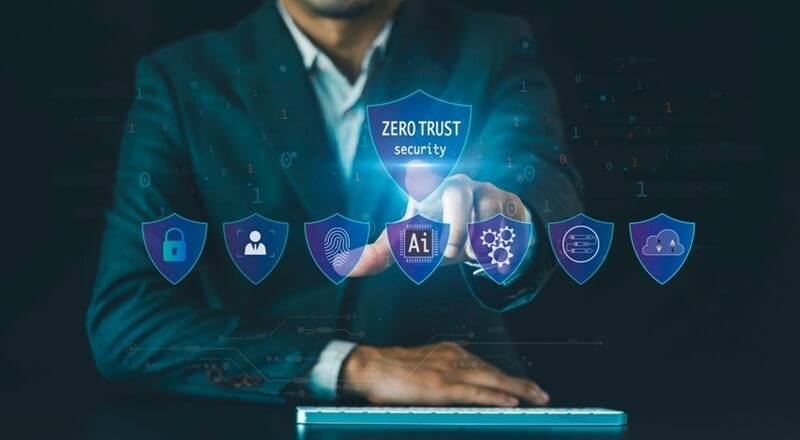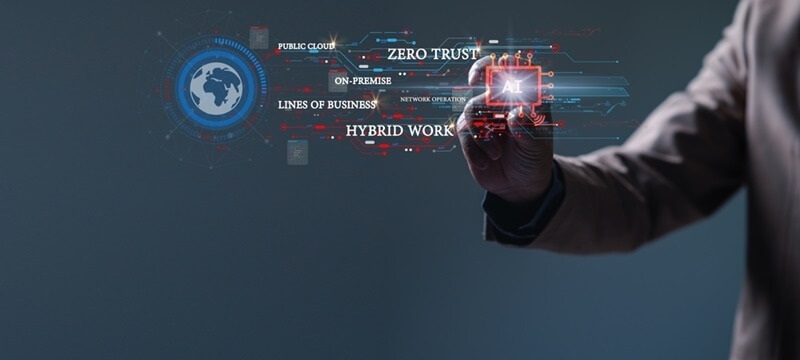
Over the past few years, cyber threats have become increasingly sophisticated and difficult to detect. Legacy security architectures that previously appeared to work were found wanting in dealing with contemporary attacks. Nowadays, organizations of all sizes are reconsidering how best to defend data, applications, and systems that contain sensitive information. This new way of thinking is creating a new norm: Zero-Trust security.
Zero Trust security is not just an empty buzzword. It's a whole different way of thinking about cybersecurity in organizations. Rather than assuming that everything inside a company's network is secure, this methodology assumes that no user and no system can be trusted by default, inside or outside the network perimeter. With threats becoming increasingly sophisticated for companies to handle, Zero Trust security is the way of the future in enterprise cyber defense.
Zero Trust security works on a straightforward principle: "Never trust, always verify." Network protection previously depended on firewalls and perimeter defense. Users and machines, after entering the network, were given wide access. Cybercrime has undermined this method with phishing, malware, and hijacked passwords.
In contrast to this, Zero Trust security requires authentication at all times. Users have to authenticate themselves constantly. Devices must authenticate that they are secure. Access to resources needed to accomplish a particular job is granted, and no more than that. This vigilant control reduces the chance of lateral movement in networks, a common tactic in advanced cyber attacks.
Zero Trust security does not depend on a single technology. Rather, it consists of several layers: robust identity and access control, endpoint protection, encryption, analytics, and real-time monitoring. These components form a robust defensive mechanism dedicated to modern threats.

Zero Trust implementation is beyond a technical change. It is a change in security perception from a strategic point of view. Today's organizations must deal with increasingly enormous numbers of users, devices, and applications in cloud environments, remote access platforms, and third-party integrations. It creates many attack surfaces.
Legacy defenses no longer offer protection. Implementing Zero Trust ensures that all users, devices, and systems are examined before being granted access. Not even the most trusted insiders are exempt from verification. This dissuades attackers from propagating across networks after gaining control of a single vulnerable access point.
In addition, Zero Trust adoption enhances resilience to typical attacks such as ransomware, credential compromise, and insider threats. Organizations implementing this model gain better visibility into system activity and user behavior. Real-time monitoring allows for the timely detection of abnormalities, facilitating swift responses to potential breaches.
Zero Trust architecture forms the foundation of this security strategy. It's not a product but rather a set of technologies and best practices. The mission statement says it all: restrict access, authenticate identities, and watch everything.
The following is how Zero Trust architecture operates in real life:
With Zero Trust architecture, organizations have total control over who has access to what, from where, and under what conditions. This limits the damage caused by breaches and helps ensure compliance with regulatory requirements.
Advantages of the Zero Trust model go beyond increased security. Organizations using the model see improvements in several ways:
The most self-evident benefit is greater protection against contemporary threats. By removing trust assumptions, organizations seal weaknesses that are repeatedly attacked by attackers. Verification and segmentation restrict breach potential to a limited area.
Insider threats are a serious issue, whether the purpose is intentional or accidental. The Zero Trust model mitigates such attacks by limiting employee access to necessary data and infrastructure.
Constant monitoring entails immense information on network activity. It allows security teams to identify unusual patterns immediately, resulting in quicker responses and less damage.
Zero Trust model advantages are as easily scalable as the regulatory demand of data protection law to assist organizations in showing compliance through documented audits and controls.
Today's business requires solutions that scale with it. Zero Trust security is flexible enough to accommodate changing infrastructures such as hybrid and multi-cloud. Zero Trust offers security at all times, irrespective of the location of resources and users.
Although commonly linked with corporate America, Zero Trust for SMBs is just as relevant. Small and medium-sized enterprises are at risk in the same manner as larger ones, but don't have the means to fall back on if they are breached. A data breach is potentially catastrophic.
Zero Trust for SMBs provides small and medium-sized enterprises with an actionable means of attaining robust security without having to invest substantial amounts in infrastructure. Cloud-based security solutions simplify and reduce the cost of implementation. Zero Trust for SMBs deployment provides such businesses with the ability to safeguard sensitive information, establish customer trust, and meet industry compliance requirements.
Also, the SMBs themselves may be entry points for an attacker to be able to penetrate large partners. Robust security controls, such as Zero Trust, imposed on SMBs secure the supply chain and make it harder for attackers to use these links.
Zero Trust secure access control considers numerous factors:
By integrating these elements, organizations base their decisions on lower risk. Secure access control prevents unauthorized access, reduces damage due to breaches, and mandates security policy compliance.
The online world keeps changing, and with it, so do opportunities and threats. Enterprises simply cannot bank on conventional security models that rely on trust by location or network perimeter. Cyber attacks are relentless, intelligent, and constantly evolving.
Zero-trust security is the model for future security. It is well-suited for today's business environment, where cloud computing, remote access, and mobile devices are the norm. By validating each access request and applying least privilege, businesses can develop a strong security posture that can withstand threats today and tomorrow.
Other than that, Zero Trust security also fosters a rich security culture. It encourages organizations to make themselves perpetually question and remain agile with emerging threats, and remain ahead of the attackers.
Cybersecurity these days is not an information technology issue but a business imperative. The consequences of breaches have changed to include cost, loss of trust, legal risk, and lost customer confidence. Zero Trust security in such a situation is the future of cyber defense business.
Through the implementation of Zero Trust and operating on top of a secure Zero Trust infrastructure, organizations are better equipped to defend themselves. Furthermore, Zero Trust for SMB gives smaller organizations the option to safeguard against sophisticated threats.
This content was created by AI